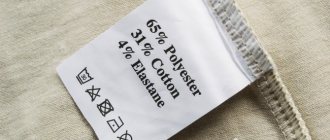Skirts and dresses
Fashion is constantly changing. And you don’t have to buy a new skirt or dress all the time; you can remake an existing outfit. For example, you can sew a lace stripe or some kind of transparent fabric with an interesting print on the hem. It looks quite cute and helps give the image a touch of romance.
Contrasting inserts with ornaments can be sewn onto the sleeves. Among other things, this will also help lengthen the sleeves. If desired, you can sew on lace. The outfit will turn out to be original and will definitely not be boring.
For lovers of lace and frills, you can sew a skirt from thick fabric, and sew beautiful lace along the bottom. This skirt is beautiful to wear under a tunic or your favorite T-shirt. This will lengthen the item and also make the image more interesting and original.
You can also lengthen the dress using bright inserts. To do this, you need to cut the dress into two parts so that you get a skirt and a top. Then sew a piece of fabric between these two parts. The result will be a kind of belt.
LiveInternetLiveInternet
Published by Yulechka-Yulyasha
https://www.stranamam.ru/post/7783172/
So, let's go. We knit this chic top.
In my opinion, any yarn will do, adding reports in length and width will not be difficult. I knit with Begonia 169m/50g. We hook such that the knitting is not loose, the fillet should be clear, even, not loose, for example, if I were knitting Begonia openwork, then I could take 2.5, but for fillet, 1.9 maximum, you can take 1.75 Cross knitting Original - width of the piece is 7 stripes, length - 97 loops Procedure 1. select yarn, knit a sample - any fillet with a cage of 1dc and 2ch, select a hook in the process of knitting the sample so that the knitting looks even, clear and beautiful; to see the knitting, cast on at least 40 loops for the sample (39 stitches of cells, 1 stitch at the end of the row) 2. measure the sample, determine how many loops of 10 cm, decide what length of the product you need, from this we start with the number of loops of the cast-on row 3. add 1 rhombus = 35 loops, length of the original 97 loops 4. start knitting the pattern on 2 sheets, start with pattern 1, take a hook for full size or the number is larger than the one with which we will knit and cast on a ch chain with the length that we chose 1 row - pattern 1. cast on 97 loops, change the hook to the number with which we will knit + 8 ch, knit a dc in the 15th ch of the chain, knit according to the pattern to the end row, finishing row 7dc, pick up 11ch, turn knitting to the second row
2nd row - we knit a dc in 9ch of the typed chain, and another 6dc in the next loops, we knit according to the pattern until the end of the row, finish the row with 4dc. Row 3 - 3ch of lifting = the first dc and another 6dc, we knit to the end of the row according to the pattern, at the end of the row 7dc , we get 11 ch, turn, take a piece of thread from another ball, attach the thread to the upper third ch of the beginning
third row, knit a chain of 18 ch, close the chain, cut the thread
4th row - in 9ch, knit a dc and another 6dc, we knit according to the pattern until the end of the row - the end of the row is 7dc, 2ch, 1dc - the row is over, now we still knit the 4th row along the chain that we added additionally - with the main thread 2ch, half-column with yarn over in 3 ch of an additional chain of 2 ch, connecting st. in 6 ch of an additional chain, i.e. skip 2 chains and tie in 3
5th row - along the additional chain we make 5 stitches, turn the knitting ch - 2 half double crochets - 6dc, then follow the pattern to the end of the row at the end of the row 7dc
6th row - 3ch of rise and 2ch of the beginning of the row, dc in 4ch of the previous row, knit according to the pattern until the end of the row end of the row - 7dc - 5 cells of 2ch and dc, 2ch - half double crochet in 3ch of additional chain, 2ch, join st to last VP additional chains - all additional chains are over
With the main thread we knit 47 ch and in the 9th ch of this chain dc and another 3 dc = we start knitting the 7th row, this is the row of straps
further according to the scheme
my process, at the moment the whole front is already knitted, I moved to the back, I knit with a single fabric, but more on that later
many of you have thin threads, so a length of 97 loops may not be enough my options for lengthening the top a) add a diamond(s) to the length b) add another row of zig-zag at the bottom c) lengthen the body of the top, starting the armhole not a whole higher a rhombus, and then lengthen the strap for part of it, respectively. The first 2 options are simple and do not require additional explanations, but for those for whom 97 loops are not enough, but a whole rhombus is a lot, option B is suitable for you. These are the explanations for you. can be extended by any number of loops, our diagram 1, the red line marks the extension by 18 loops, the green line by 25 loops, further explanations are for 25 loops
This is how long the body of the top will be up to the armhole, look at the green line
cast-on row 122 loops + 8 loops, turn, knit dc in the 15th loop of the chain, look at diagram 1, find along the green line the 9th row of the entire knitting or the 3rd row of straps = this is the place where your knitting starts from the 1st row, we knit according to the diagram (9 rows ) 3 rows, then you need to knit the armhole, the principle is the same = tie a thread in the top ch of the beginning of the 3rd row, tie a chain of 18 ch on it, then an explanation of how to knit the armhole in a row = 4,5,6 rows 1 row of the armhole = 4 row of knitting - knitted 4 dc , we knit along the chain dc, 2 half double crochets 2 ch, connect st through 2 ch in 3 chains, 5 join st along the chain, turn, 5th row of knitting = 2nd row of armhole 5 ch, dc in the connected column, the cat was after 2 ch in front row (above line look) and another 6 dc in each loop = 7 dc they will be just above the last dc 4 rows when you attached the chain, then 3 windows, 13 dc, etc. according to the pattern until the end of the row after = 3 row of armhole = 6th row of knitting goes 7 dc, 5 ch 3 dc in air loops before the row, we knit the next ones along the chain = 3 dc, 2 half double crochets, sc, connect st in the last loop of the chain, the chain is over, cast on 42 loops for the straps with the main thread or as many as needed, a multiple of 3, look at what stitch should be first and knit the strap
girls, this is the principle of how to lengthen, it does not mean that I will count for everyone, otherwise I will spend the night in SM, showing how it can be done, according to this principle, you can also calculate for yourself on your number GIRLS, who finishes the front knitting, I knit the back immediately, not separate part, there is no point in separating PLEASE NOTE that row 1 and row 57 are limiter rows for rhombuses, this means that you knit the back from row 2 of the pattern and end with row 56, joining, in the process of knitting, row 56 to the first row of the front
Coats, cardigans, sweaters
If the coat becomes small, then it can be expanded by inserting elastic bands or beautiful ornamental details on the sides. The same goes for sweaters and cardigans. You can sew fabric or lace along the bottom of a sweater or cardigan.
It all depends on your own preferences. You can add inserts in the middle of a sweater, coat or cardigan, just like with a dress.
Lost weight: what Sofia Tarasova sacrificed for the sake of “VIA Gra” (new photos)
“We are still friends”: Derevianko commented on the breakup with his wife
The money tree pleases with lush flowering: my secret is in caring for the leaves
How to stretch a wool sweater at home
Are you familiar with the situation when you have nothing to wear, although your closets are simply bursting with clothes? Instead of spending money on buying new items and throwing out old ones, you can repurpose an old sweater that's been collecting dust on the top shelves of your closet. All you need is a little time, patience and creativity!
Necklace on a sweater
An old, baggy sweater can be made stylish again by sewing or gluing on some rhinestones and beads.
Lacing
Lacing will perfectly emphasize your slimness and thin waist. Half an hour, and a stylish sweater for the party is ready!
Tulle insert
An idea for the most romantic natures who lack airiness and lightness in their image.
Romantic bow
Has your favorite sweater gone out of style? It's no problem. How about adding a stylish and romantic bow to add some playfulness to your outfit?
Tassels
This new thing will take you from 15 to 30 minutes, depending on how many tassels you want to sew on the sweater.
Open back
This sweater will make you a real star at any party - stylish and easy to make!
Of two old sweaters, one is new
Here you can show your imagination and even do patchwork - create and create.
Stylish sweater and shirt dress
For such a new thing, you just need: scissors, thread, perhaps an elastic band, pins for measurements. For added extravagance, you can sew leather details on the elbows or belt.
A scattering of beads
Everything ingenious is simple. Take a sweater and sew on beads and sequins.
Lace
Nowhere without lace! Delicate lace inserts in the neckline and in the cutout at the back will look especially elegant and fashionable.
Good afternoon, dear needlewomen.
I really need advice, preferably with a detailed explanation.
I knit mostly with crochet, I don’t knit a lot, but I also really like it. My husband’s brother asked me to knit a sweater, a regular one, tight-fitting with a collar like a turtleneck. I took measurements, knitted a sample, calculated the number of loops, and got started. I knitted everything, and when he tried it on, it turned out to be a little short in length.
QUESTION: how can you lengthen the product without unraveling it completely (knitted from bottom to top, sleeves as needed) with elastic at the bottom.
For such a sweater for the fall, it is good to take a thin but warm knitwear, for example, wool or with the addition of wool. Creating a pattern is simple: a well-fitting sweater or jumper made of a similar material will help (do not take a knitted jumper that is too thick: thick knitwear fits differently). Sewing such a sweater is also easy. If you don’t have an overlocker, you can sew it on a sewing machine (read about different ways to sew knitwear on a machine here).
How to sew a T-shirt without a pattern: master class
Jeans, trousers, shorts
To lengthen the shorts, you can sew lace, wide braid or contrasting fabric along the bottom. Both lace and contrasting fabric can be sewn onto the bottom of the trousers. The fabric can be made into several layers. The end result will be a kind of ruffle.
You can also sew fabric to match the jeans and sew on buttons or rivets. You will get an original continuation of the trouser leg. For sports style lovers, a good option would be an elastic band that goes along the bottom of the trousers.
If you want to decorate your jeans and give them a special stylish look, then you need to cut the legs diagonally and sew a beautiful lace insert in the middle. It looks very original and stylish.
Found a violation? Report content
How to lengthen sleeves: sew removable cuffs
The number of parts and their parameters are selected individually. Experiment and try new things: this recipe will help you create removable cuffs to suit your taste.
Step 1
Step 2
Cut 2 strips of lace or satin ribbon 2 cm shorter than the circumference of your wrist.
Step 3
Step 4
Weave or baste 2 ribbons along the gathering line and stitch on a sewing machine or sew by hand.
Step 5
Finish the seams with an overlock stitch or zigzag stitch.
Step 6
Step 7
How to widen a men's jacket?
The following question came to my email address: how can you widen a man’s jacket, its sides diverge. If the sides of the finished product diverge, it means it is small.
Accordingly, in order to correct this defect, you need to increase the width of the product , but... Is it that simple?
There are several options for expanding the finished product.
The first option is to increase the width of the product due to seam allowances.
To do this, you need to rip the lining and vertical seams on parts made of the main and lining fabric - side, middle back seam, relief seams, etc., laying new lines, increasing the width.
This option is probably the simplest of all, but difficulties :
The allowances may not be sufficient for the magnification you need. The fabric from the allowance may differ from the fabric of the product due to use.
In other words, even if the width of the seam allowance is enough for you, the color and type of fabric may indicate that the product has been embroidered.
The second option is to increase the width by redrawing or trimming one or more parts .
That is, you need to flog, say, a side, recut it in the direction of increase (or additionally cut another side), not forgetting to also add the width of the sleeves, and “assemble” the jacket again.
Sew the flange to the details of the back and front, and repeating all the manipulations with the lining, stitch it.
Difficulties in using this option:
This is practically the same as sewing a new product, so only you can decide whether it is worth it?
The third option is to increase the width by adding additional parts . For example, create an imitation vest. That is, from a suitable material, cut out two halves that imitate a vest, process them and stitch them onto the product from the inside out.
This option seems simple, and its implementation will not complicate you much. But you can’t do without pitfalls here either.
Firstly, not every men's jacket will “survive” such intervention from an aesthetic point of view. Secondly , it is not so easy to select harmoniously combined materials for the finished product. Thirdly , buttons and loops. They can be disguised, for example, with a suitable braid, stitched over plastered loops, or carefully, with jeweler's precision, sewn on top of trimmed additional parts made of the same fabric as the jacket. The main thing is that everything fits together and does not spoil the appearance of the product.
But, nevertheless, I will not advise expanding a man’s jacket, which is very small (although the choice is yours) and here’s why:
Although, nothing is impossible, and if you approach the matter responsibly, stock up on suitable material and patience, you may be able to expand a man’s jacket.











